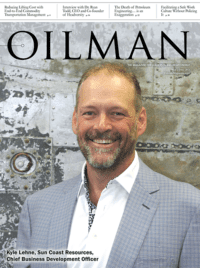Achieving the “buy in” mentality of a successful safety culture is a daunting task of epic proportions. It involves persevering through teaching, coaching, mentoring, preaching and sometimes begging. When accomplished, the duration of this utopia seems fleeting as it eventually begins to fade as the notorious villain of complacency creeps in. A safety professional’s knee jerk reaction tends to be throwing in the towel and picking up the sheriff’s badge with write-ups and lectures holstered on the hips.
As a safety professional, I have come to the realization that I have seen it all when it comes to safety programs and the distaste and lack of support that accompany them. I have seen programs that were developed only to meet regulations and in no way utilized to ensure the health and safety of the workforce for whom they should have been designed. I have also been tasked with promoting safety programs that were ideal in their formation but lacked the commitment of management for successful implementation. The hair on my neck stood at point when I learned at other workplaces that the safety manual was covered in 10 years of dust and resided in a closet never to have its availability made to the individuals it was designed to protect.
A successful safety program should be a priority to both the workforce and management. It should be a tool that is depended upon and welcomed in daily activity. It has been my experience that a successful safety program is either desired, but no one has a clear path to accomplish the task, or the company lacks the manpower or ability to devote to its birth.
Throughout my safety professional career, I have come to realize that a safe work culture is possible to create, but not simple to maintain. It is a two-part system that requires determination, grit and a positive attitude.
Creating a Safe Work Culture
Creating a safe work culture is much like an uphill climb. It is strenuous and involves pain. One must be clear in the goal and keep pushing as the pain tends to increase before it releases.
Nothing turns away an individual more than to be lectured by someone who lacks their same knowledge level. It sparks the question of how do you know what I do everyday when you sit in an office in the air conditioning? Yes, many believe that safety professionals sit at lavish desks and wax our clipboards in preparation to make life miserable in the field.
Before a safety professional can expect to gather the masses to even consider creating a safe work culture, he or she must establish credibility. This involves communicating with the workforce on their level, which means going to their work environment and learning what they do through the course of the day. Notice I say learn, not observe. No one likes to be bird dogged while they are working; however, workers are more approachable if you take a genuine interest in what they are doing. This builds credibility, and this additional knowledge gain will assist the safety professional in recognizing unsafe behavior associated with the task at hand. It is here that an opportunity to plant the first seed to grow that effective safety culture presents itself.
Putting the employee at ease is essential while learning what they do in the field. I have always found, without a doubt, cracking a joke and making a personal connection are the first steps to achieving the “buy in.” I have been blessed with incredible mentors in my career and one taught me how important the personal connection is to a successful relationship. I pride myself in knowing how many children my people have and the names of their spouses. I think it is important that I know Jack’s son, Jack Jr., plays football and that I ask on Monday mornings how his game went. It is just as crucial to know that Jenny’s husband is on the job hunt and I periodically ask if he has had any luck. These personal connections help establish that credibility and allow for a more receptive response when promoting safety.
Management tends to be more supportive in what the safety professional needs to create a safe work culture if they see a positive advancement in its development. When “buy in” is visible, time and funds are made more readily available.
Once the “buy in” has been established and the workforce is willing to listen to what the safety professional has to say, it is important to capitalize on the win. Careful consideration must be taken to keep the workforce’s attention while they are willing to listen. Here is where mentoring is the big play of the game.
If the safety professional is fortunate enough to have everyone’s ear, he or she must be careful not to lose it. Through mentoring and not lecturing, help can be administered to the workforce and guidance can be implemented to create that safe work culture. Mentoring can be crafted to deliver the message and relate it to personal life. For instance, instead of lecturing on the importance of eye protection, I can mentor the workforce and relate its importance to their specific lives.
“Imagine, Jack, if you make the decision not to wear your safety glasses and that debris your grinder is creating permanently damages your vision. Imagine how you would feel to never see Jack Jr. catch the Hail Mary pass and win the game. Imagine how much that would hurt both of you.” When Jack nods his head in agreement and you see his commitment made to donning eye protection, congratulations are due. The safety professional has reached someone, and Jack has committed himself to working safely. Pop the cork!
Maintaining the Safe Work Culture
I have been at this game for a long time now. I do not claim to be an expert in everything safety, but I know what I know. In my experience, it is an undisputed fact that failure to maintain a safe work culture should be owned by the safety professional. We all have heard the saying “it takes two to tango,” and while that is true, the safety professional is still the parent of the safe work culture and must protect it. One does not just plant a tree and walk away. It must be watered and cared for. The same is true for an effective safe work culture. When incident-free operations are achieved, the safety professional must still provide the proverbial water and continue to muster the care needed.
Do not misunderstand. Maintaining a safe work culture isn’t a simple task. The safety professional must combat various factors, and these factors are all weapons in the arsenal of complacency, which rears its ugly head when least expected and at the most inopportune times.
Incident-free operations are the goal; however, they serve as the catalyst for complacency to creep in. The workforce tends to let its guard down when incident and injury have been squashed. When least expected, Jack might not be so inclined to wear those pesky safety glasses because he thinks they are not necessary. Afterall, he has gone without incident for a long period of time. Suddenly Jack is proudly listening to the commentator announce that his son scored a touchdown and then instantaneously plummets into despair because he was robbed of that glorious sight due to poor decision making and a resulting injury.
Perhaps Jack might not have strayed from working safely had he been continually engaged by the safety professional even after incident-free operations had been achieved. Yes, even the safety professional can fall victim to complacency. It is a struggle for all.
The safety professional must never lose the edge, so to speak. He or she must stick with what works. Interactive group exercises, continued mentoring and being visible in the field are all strategies to battle complacency.
Additionally, management must remain committed to fostering a safe work culture. I recall an instance where, with the assistance of key personnel, we turned a safety culture around from a startling high incident rate to zero within one year. It was so rewarding. Imagine my disappointment when management wanted to pull me from safety and assign me to a different department. They felt the safety culture had been transformed into one that was acceptable and could “run itself.” Management must remain committed to a safe work culture and understand that it needs to be continually maintained.
Even management’s commitment falls under the responsibility of the safety professional. As such, we must establish and maintain the safe work culture, but we must also advocate for it. We must continually validate and justify its importance. I struggled and stood my ground in denying a departmental transfer to ensure I could remain in place managing the safety culture that I and others proudly created.
As soon as complacency enters the scene, a safety professional must react. Depending on the severity of the complacent act, management’s commitment and the overall attitude of the workforce may sharply decline. Consequently, the safety professional might throw in the towel. Instead of remaining steadfast in coaching and mentoring, the safety professional often accepts the alter ego of “Safety Sheriff.” The once safe work culture goal now shifts to enforcing safety law and filling up the proverbial jail with offenders. No one wins and the tree withers away.
Safety professionals must remain focused. They must continually engage both management and the workforce to ensure a safe work culture. The best way to combat complacency is to prevent its very entrance. Continual mentoring, safety presentations that demand participation, constant personal integration and showing that each member of the workforce is considered important serve as the pillars of a safe work culture. A true safety professional is uniquely dedicated. Harnessing this dedication, coupled with determination, will ultimately serve as a successful game plan in creating and maintaining a safe work culture. And if you, the safety professional, have accomplished this major feat, consider yourself lucky as you have achieved something rare: safety greatness.
Nick Vaccaro is a freelance writer and photographer. In addition to providing technical writing services, he is an HSE consultant in the oil and gas industry with twelve years of experience. Vaccaro also contributes to SHALE Oil and Gas Business Magazine, American Oil and Gas Investor, Oil and Gas Investor, Energies Magazine and Louisiana Sportsman Magazine. He has a BA in photojournalism from Loyola University and resides in the New Orleans area. Vaccaro can be reached at 985-966-0957 or nav@vaccarogroupllc.com.







